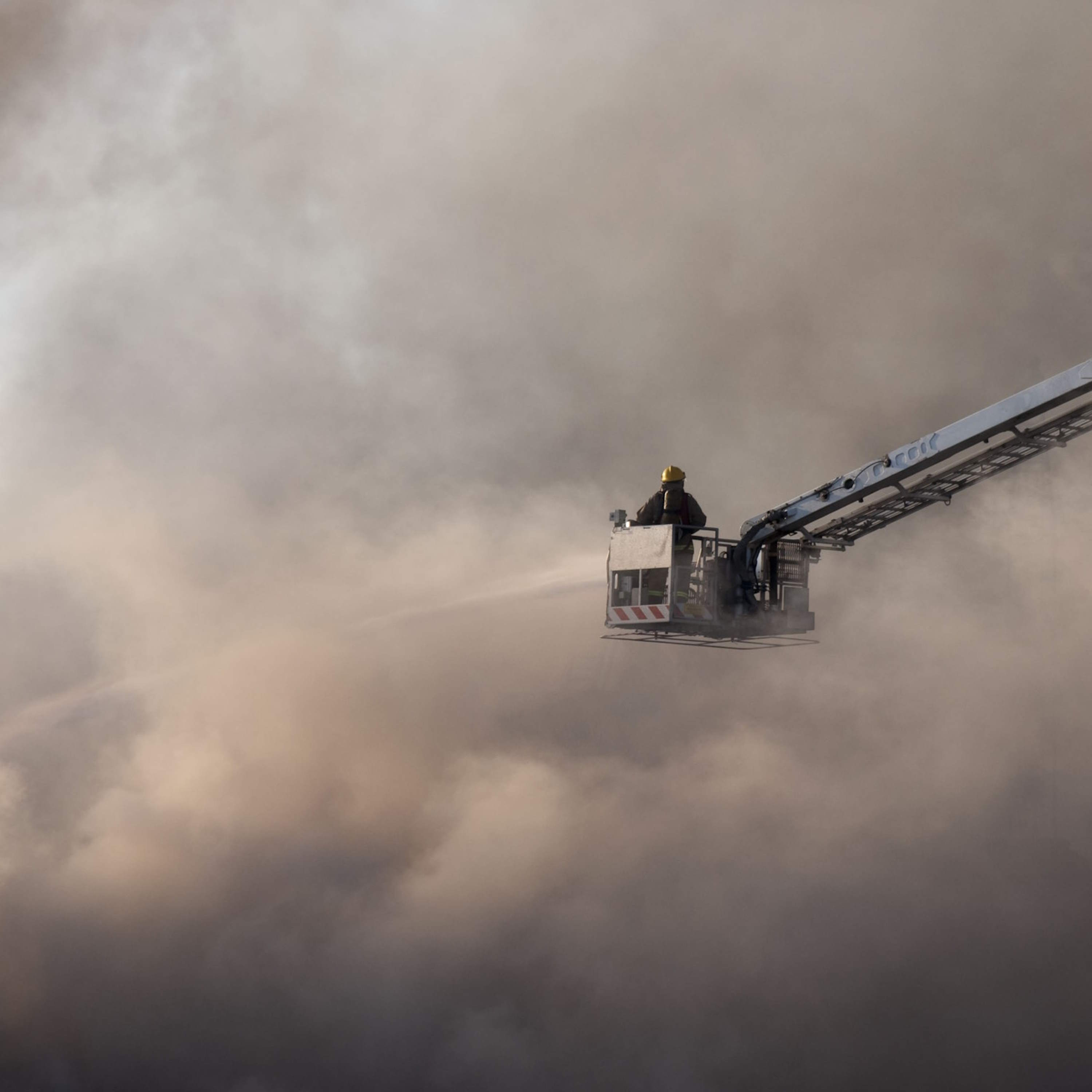Discover Code 3 - The Firefighters Podcast
Code 3 - The Firefighters Podcast

Code 3 - The Firefighters Podcast
Author: Scott Orr
Subscribed: 707Played: 17,772Subscribe
Share
© Copyright by Scott Orr. All Rights Reserved.
Description
The podcast for and about firefighters, "Code 3" covers topics of interest to those in the fire service, in about 20 minutes. We take one subject, one guest, and get it done. We don't waste your time.
363 Episodes
Reverse
Do you know exactly how vertical ventilation works?Depending on your level of experience, you may think you do, but you still might not have a really solid understanding of why it works. Simply cutting a random 4x4-foot hole in the roof won't do the job in all cases.My guest today has a good deal of experience as a firefighter, but he admits that, until he saw a live fire test, he misunderstood how cutting a hole in the roof affects the fire.We’ll talk about that, as well as when it’s the best time to vent the roof, how dangerous it is to work up there, how handlines can be used to move air and smoke with it, and how much training firefighters need to remain proficient in roof operations.Nicholas Papa is a 17-year veteran of the New Britain, Connecticut, Fire Department, where he’s a captain. He became a firefighter in 2003, volunteering for a neighboring suburb until he was hired by New Britain. He is the author of the book Coordinating Ventilation: Supporting Extinguishment & Survivability.
If you spend any time on social media, you’re probably familiar with Curt Isakson.He has a massive presence on Facebook and about 6,000 followers.Chief Ike, as he’s also known, has had a 30-plus-year career in the fire service.He's also been an advocate for treatment of firefighters who sufFer from PTSD.So it was not a big surprise when Curt decided to enroll in the IAFF’s Center ofExcellence for Behavioral Health Treatment and Recovery.It’s an in-patient treatment program held at a facility in Maryland. The program isdesigned for firefighters and treats a variety of emotional problems. Whileabout a third of the participants suffer from PTSD, there are also victims ofsubstance abuse and other issues, like depression.In Curt’s case, he decided to check himself in to be treated for PTSD.As his social media followers know, his request for time off to be treated wasdenied by his employer, Escambia, County, Florida, Fire-Rescue.Curt decided to go anyway.When he returned, he was forced into retirement.But Curt is not sorry he went, even though he lost his job.
When Bill Niemann joined the fire service in 1976, the landscape looked verydifferent. This was a time of rubber boots, and riding the tailboard of theengine. SCBAs were the newest thing, and not everyone got to have one.When Bill Niemann joined the fire service in 1976, the landscape looked verydifferent. This was a time of rubber boots, and riding the tailboard of theengine. SCBAs were the newest thing, and not everyone got to have one.But for the second half of his career in the fire service, Bill carried a gun. Hewas an assistant fire marshal assigned to the Arson Crimes Unit of PrinceWilliam County, Virginia. Back then, there were no rules for fire investigations. Just wait until you hear how he wrote his own rulebook.Speaking of writing, Bill has also written a novel. It’s titled “Heavy Fire Showing.”But for the second half of his career in the fire service, Bill carried a gun. Hewas an assistant fire marshal assigned to the Arson Crimes Unit of PrinceWilliam County, Virginia. Back then, there were no rules for fire investigations. Just wait until you hear how he wrote his own rulebook. Speakingof writing, Bill has also written a novel. It’s titled “Heavy Fire Showing.”WhenBill Niemann joined the fire service in 1976, the landscape looked verydifferent. This was a time of rubber boots, and riding the tailboard of theengine. SCBAs were the newest thing, and not everyone got to have one. Butfor the second half of his career in the fire service, Bill carried a gun. Hewas an assistant fire marshal assignedto the Arson Crimes Unit of PrinceWilliam County, Virginia. Back then, there were no rules for fire investigations. Just wait until you hear how he wrote hisown rulebook. Speakingof writing, Bill has also written a novel. It’s titled “Heavy Fire Showing.”
If you’re a member of a volunteer department, you’ve probably run into the problem of Incident Command.The issue is, who’s going to be the IC on a given fireground.Now, if your volunteer department is lucky enough to have career firefighters showing up to calls with you, the problem’s not so bad. Odds are, that career firefighter is going to be the one who takes command of the scene.But what if the response is all-volunteer? Who takes command then?That’s the question we’re going to examine on this edition of Code 3.My guest today is Richard Ray. He’s got over 30 years in the fire service. He’s both a firefighter with the Creedmoor, North Carolina Volunteer Fire Department. His full-time job is battalion chief with the Durham, North Carolina Fire Department. He instructs on a national level as well.
This edition of Code 3 is a little different than most.It’s about a Fire Chief who lost his job after he incurred the wrath of the UnionLocal’s officials and, ultimately, the IAFF. Scott Freitag was the chief of the Central Arizona Fire and Medical Authority, orCAFMA. The agency was created under Scott’s leadership when two fire districts combined undera JMA to form CAFMA in 2015.CAFMA covers 365 square miles of territory of Yavapai County, Arizona. And it servesabout 100,000 residents from 12 stations.One day in August 2024, a press release showed up in email inboxes saying that theIAFF had censured Scott Freitag by a vote of 2,520 to 0. Iwas pretty startled to get this news because I know Scott Freitag to be anhonest, decent Fire Chief who was genuinely concerned about the welfare of hisfirefighters.As you’ll hear, the no-confidence vote led to Scott’s firing after 11 years asFire Chief in September 2024.How this all went down depends on whose story you believe. It may well have hadlittle to do with firefighting and much more to do with politics and a healthplan.
Are you tired of being told to “think outside the box?”Well, if you are, I have good news: today’s show is about thinking inside thebox.It's about looking at structures as a series of boxes, determining which box has theactive fire in it, and how to attack that fire. Boxes determine flow path inlarge modern residential structures.It’s an interesting idea, and it was developed for the Plano, Texas fire departmentby Eric Wahlberg, a 30-year veteran of Fire/Rescue and an assistantchief. He is also a Master Firefighter with the state of Texas.
One of the first tools you were taught about when you started this job is the basic groundladder.Once you learned how to throw one, it was no big deal, right? The longer the ladder, the more firefighters get to carry it. Except…What if there’s not enough people on the fireground to do that?You might be surprised to find that the 24-foot extension ladder can safely be carried and placed by just one firefighter. Now, a lot of understaffed fire departments, especially volunteers, already know this. But if you started at a fully-staffed department, you may not have had to throw a ladder this size alone.Today’s guest runs seminars on the use of ground ladders, and this is one of his favorite topics.Kevin Weis started his career in the fire service in 2012 as a volunteer firefighter in Coldwater, Ohio. He’s been on the career side since 2014, starting in Defiance, Ohio. In 2020, he moved to the Glendale, Arizona Fire Department. Kevin’s currentlya firefighter/ paramedic and specializes in TRT & Haz Mat. He’s also been afire inspector. He teachesseveral hands-on-subjects, including searchtactics, forcible entry, hose line management, and of course, ground ladders.
One of the least exciting jobs for a firefighter is the dreaded Community Risk Reduction assignment.In an urban environment, CRR may mean doing a meeting with the people you serve. Or maybe you’re changing smoke alarm batteries.Either of those—not exciting, but not so much work, either.But if your department covers urban and rural areas, where you could be tasked to fight a brush fire, well, now you may have to do some physical labor ... plus those meetings.Not all, or even many, departments have dedicated crews to community risk reduction. Often, CRR is one person, whose job may include other responsibilities.Today, I’m talking with one of our favorite guests, Chad Costa, about what CRR can do for your community…and what you can get out of it, too.Chad is assistant fire chief for the Petaluma, California, fire department. He has over 25 years on the job.
(This episode is a rebroadcast of a June, 2018 edition of Code 3) On June 30, 2018, the fifth anniversary of the LODD of 19 members of the Granite Mountain Interagency Hotshot Crew at Yarnell Hill, a memorial ceremony was held in Prescott, Arizona, their home base. The brief ceremony commemorated their loss and celebrated their lives. This is the event.
Incident commanders, here are some questions for you:How much thought do you put into where you set up your command post?Is it usually on the alpha side of a structure? Why is that? Routine? Street access?What about distractions? For example, noise. That can not only give you a headache but also make you miss an urgent radio call, right?My guest on this edition of Code 3 has been considering questions like this for a while. He has suggestions for things to think about the next time you pull up to the fireground and are ready to drop that tailgate.Robby Bergerson is the executive deputy chief of the Waco, Texas Fire Department. He’s got three decades in the fire service, having served in every rank and supervising every division. He’s also a credentialed Chief Fire Officer through CPSE.
This week’s show is related to last week’s. If you haven’t heard episode 344 with Jennifer Stanislaw, go ahead and listen to it—it dovetails nicely with this one.On this episode, we’re talking about the importance of setting standards for probie training.Years ago, that training consisted of handing the probie a mop as often as a ladder. It was designed to “teach a solid work ethic.”But just as hazing has (mostly) faded away in the firehouse, new firefighters expect better training on the techniques they’ll need in the field. Their bosses expect them to know those tactics as well.That’s why today’s guest says it's important to set the bar for probies and keep raising it. He has some ideas of how to do that.Jesse Marcotte is the training chief for the Northville Township, Michigan Fire Department. He is a member of the UL FSRI Training Advisory Committee. And he served as a board member of the ISFSI.He also spoke on today’s topic at FDIC 2024.
Firefighters around the country are looking at the possibility of a new OSHA ruling very carefully.I’m talking about the two-in/two-out rule, contained in NFPA 1500.There’s a new report written by five prominent members of the fire service that says two-in/two-out doesn’t make firefighters any safer. Instead, the time wasted waiting for a RIC crew to get ready makes it more likely that civilian victims will be killed.The report uses data from Project Mayday to support this claim. It points out that when firefighters die in the line of duty, it isn’t usually in a mayday situation.It also says that if a mayday is called, it’s more likely that another interior crew member will make the save. The rule is routinely circumvented by departments that need to get inside a building but don’t have enough people on the fireground to do it.An OSHA ruling would add some enforcement teeth to NFPA 1500. The report’s titled, “Removing Two-In/Two-Out: A Modern, Data-supported Defense of Our Core Mission." It was written by Bill Carey, Sean Duffy, Nick Ledin, Chris Thompson and Scott Thompson.Sean Duffy is acting as the PIO for the group and spoke to me about the report.
From Day One in the fire service, the lecture is the standard teaching method. Sometimes, it seems like fire departments must keep Microsoft in business, what with all the PowerPoint software they must be ordering.And you know the instruction -- notice I didn’t say “learning” – keeps going like this until you retire. Want to be a Battalion Chief? There’s a lecture and PowerPoint for that. An Engineer? Yep, got it covered. Captain? Of course.Now, I know the fire service doesn’t like change. As Chief Brunacini said, "Firefighters hate two things—change and the way things are now.”But maybe it is time to teach differently. If you’ve ever lectured to a room full of Millennials or Gen Z, you know they don’t get much out of it. They’re on their phones.Here to explore some fresh ideas for teaching is Jennifer Stanislaw.She heads up the West Salem, Oregon, High School Emergency Services Program. She also has over 25 years of experience as a paramedic and volunteer firefighter.
Every firefighter who rides an engine has a favorite tool: The Halligan Bar. As nearly all young firefighters learn, it was invented in 1948 by an FDNY Deputy Chief named Hugh Halligan.Not long after that, he created the Halligan Hook. Sometimes it’s called a New York Roof Hook.This six-foot bar is a favorite of truckies who need to open up roofs.But there’s another way to use the Halligan Hook: as a rescue tool. It takes a little creativity to see a bar meant for ripping open a roof as a way to save a firefighter's life. Today’s guest is here to explain how to do it.AB Turenne is the captain of training and safety with a career department in Middlesex County, Connecticut. He’s got 25 years on the job and is a certified Level III Fire Service Instructor.
If you were among those fortunate enough to be in the audience at the opening of FDIC 2024, you heard something special.I’d say it was a call to arms… a call to take revolutionary action.Chief David Rhodes spoke for about a half-hour, laying out a case for change in the fire service.His main argument: that the fire service has become too risk-averse. That the leaders of departments are so afraid of injuries—and of course, lawsuits—that they don’t want firefighters to take any risks on the fireground.Or even in training.He said that puts citizens in danger. And he said that change needs to happen, from the bottom up. It sure won’t come from the top down.Here to discuss that with me is David Rhodes.Chief Rhodes had nearly four decades in the fire service when he retired from the Atlanta, Georgia Fire Department. He currently serves as the Editor in Chief of Fire Engineering magazine. He’s also the Educational Director for FDIC.
Fire departments around the U.S. are approaching a tipping point.At the same time career departments are seeing a drop in applicants, they’re also losing existing firefighters.This is a problem. Once upon a time, not so long ago, it was tough to get a job in the fire department.But now, fewer people line up for those spots. Maybe it’s generational, maybe it’s just a natural cycle and it’ll change.Or maybe it’s something more.Here to discuss that with me is Dr. Reggie Freeman.He’s the chief risk officer for the HAI Group, based in Cheshire, Connecticut. He’s served as the fire chief of three departments: Oakland, California, Hartfort, Connecticut and Lockheed Martin Aeronautics. He’s also a member of the board of directors of the NFPA.
There’s a constant battle between firefighters who believe that safety on the fireground precludes aggressive tactics.The opposite is also true.What’s the compromise between the two?It seems as if firefighters don’t believe that it’s possible to be both aggressive and safe. It is, of course, and my guest today is here to offer some suggestions about how you can implement both.He’s no wimp—he puts Mrs. Smith first, his crew second, and his own personal safety third.Ryan Scellick is a Captain at the City of Pasco Fire Department, in Washington State. He is the co-owner of Young Officers on Fire which puts on annual conferences, trainings, and manages a national non-profit mentorship group.
What’s potentially harder to locate victims in than a hoarder house?A stuffed-full self-storage locker.But that’s exactly what can happen. And even if the victim’s not inside at the time of the fire, their activities may have caused it.Those storage spaces are frequently climate-controlled, and they’re cheap…maybe $100 a month for a small one. That makes them seem like a great place to live for someone who can’t afford to rent an apartment.They aren’t, of course, and occupants who choose to try living in one can become the victim of a fire they can’t escape.This week, my guest tells us about his experiences with homeless people who tried to make a storage unit home…and regretted it.Tim Thompson is chief of the Georgetown, Kentucky Fire Department. He’s worked his way up over 19 years of service from firefighter to the boss. He’s also a member of the Kentucky Association of Fire Chiefs.
Are you ready for this?There’s a whole class of hazardous chemicals that can damage your hearing, and they’re by-products of your average structure fire.Yes, that’s right: When you burn home furnishings, you don’t just get carcinogens. You get “ototoxic” chemicals. Now, the PPE you wear routinely for firefighting protects against this.But—just like the stuff in smoke that causes cancer—ototoxic chemicals are a threat when you least expect them: during overhaul and even standing outside a burning structure.And when you combine exposure to ototoxins with screaming sirens and fireground noise, well, it’s no surprise that firefighters are often retiring with substantial hearing loss.Here to tell you what you need to know is Brian Daboul. He’s chief of the Mine Hill Fire Department in New Jersey. That’s a volunteer department, and Brian’s paid job is in occupational safety strategy and program development. He is also the owner of BGD Safety and Compliance, LLC, which serves industry and fire departments.
A recent study done at North Carolina State University took a look at PFAS chemicals used in turnout gear and came to some interesting conclusions.PFS layers are what give current turnout coats and pants their oil and water repellency.They're also a known carcinogen, so donning PPE made with PFAS is dangerous even before you step onto your engine or truck. Unfortunately, when the study looked at alternatives, it found that all oil repellents can also repel water, but all water repellents don’t necessarily repel oil. My guest on this show is Bryan Ormond, an assistant professor of textile engineering, chemistry and science at NC State. He also wrote up the results of the study.




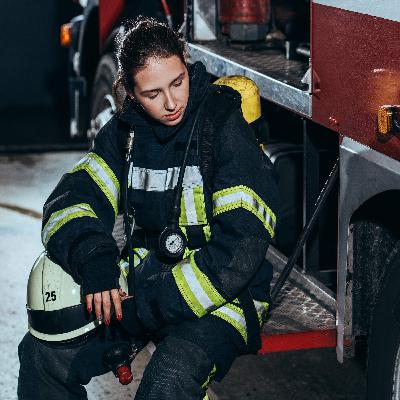
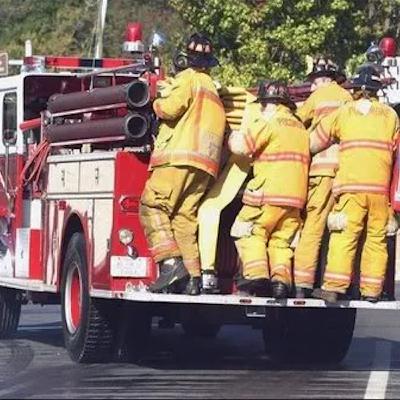
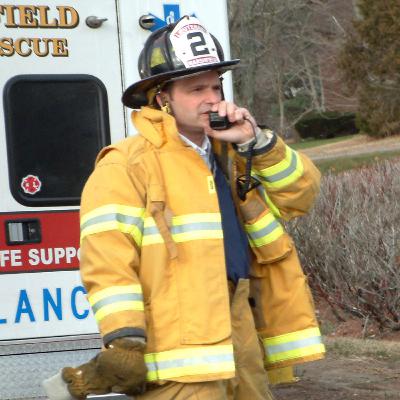
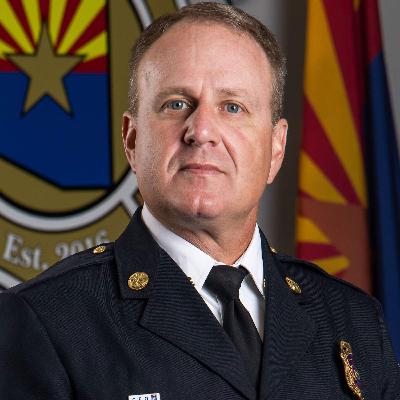
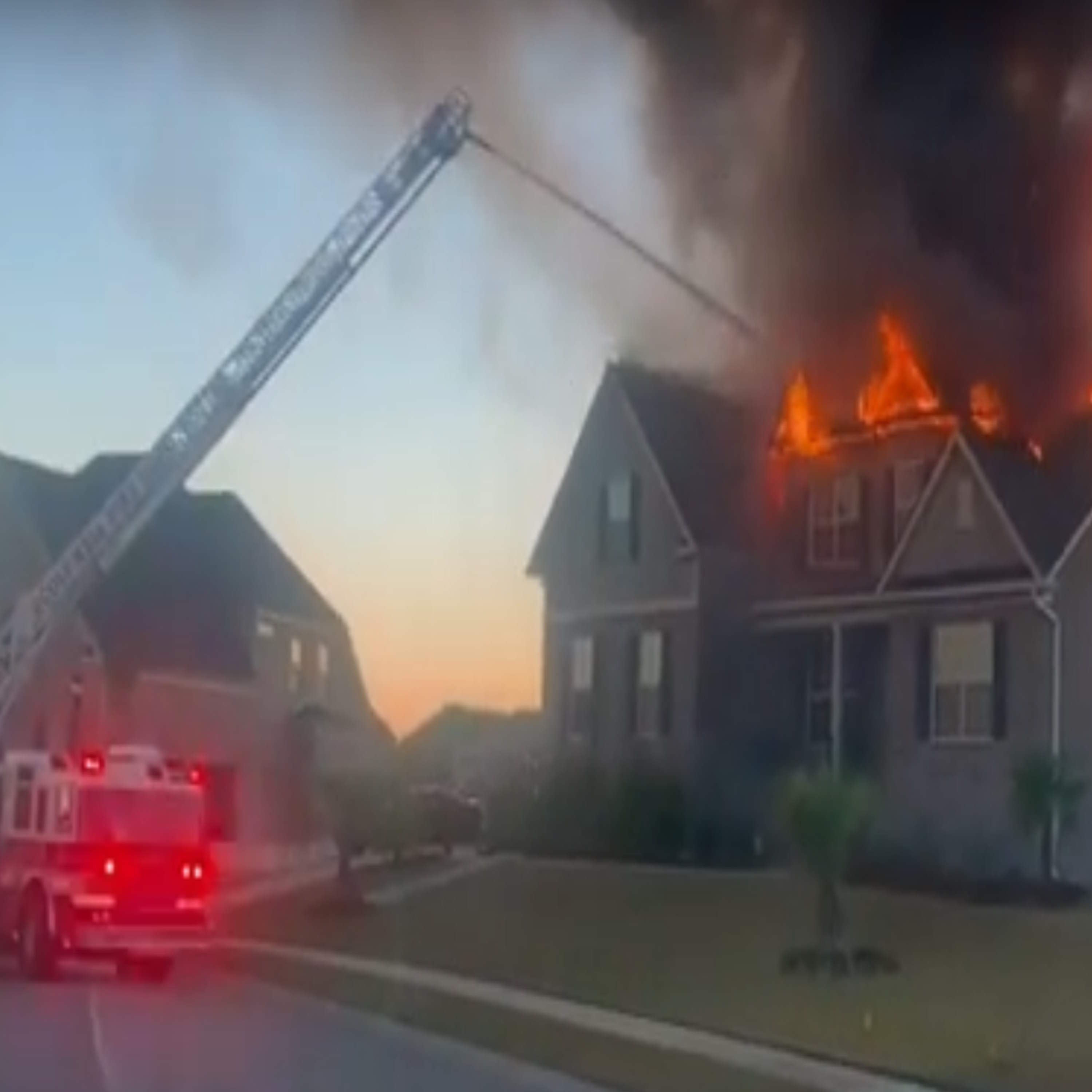


![[Rebroadcast] Fifth Annual Granite Mtn Hotshots Memorial in Prescott AZ [Rebroadcast] Fifth Annual Granite Mtn Hotshots Memorial in Prescott AZ](https://s3.castbox.fm/97/0e/74/1ac7234f8c15d2fc306485451dda765904_scaled_v1_400.jpg)









